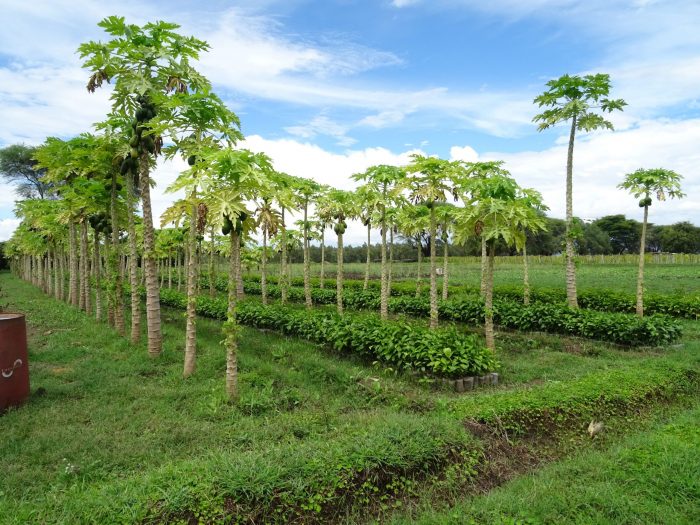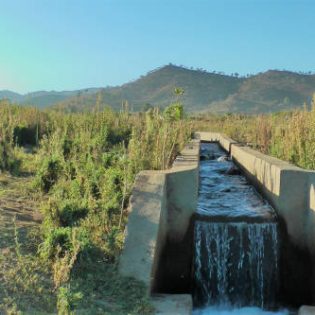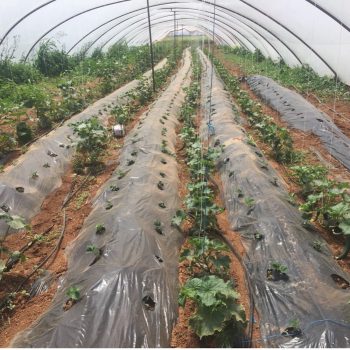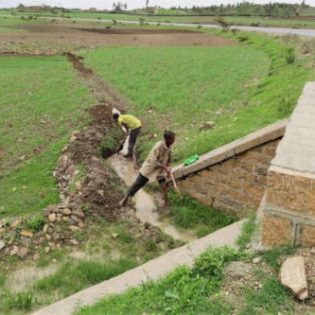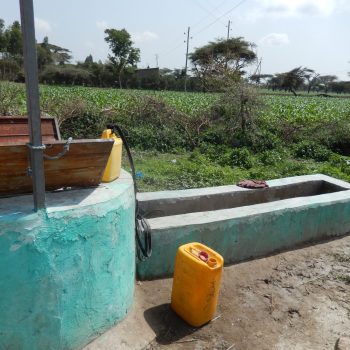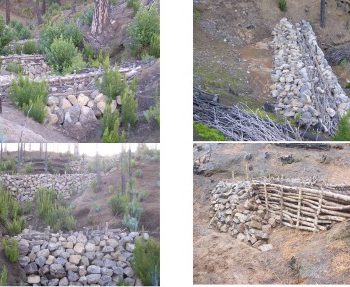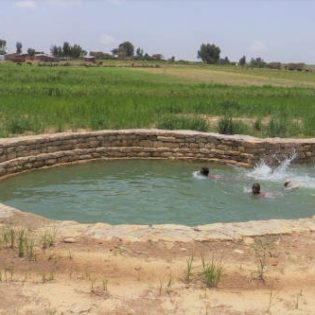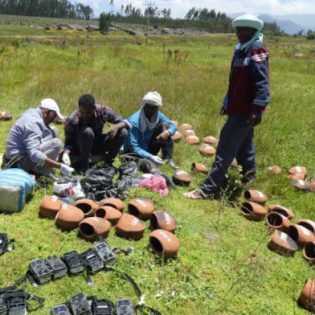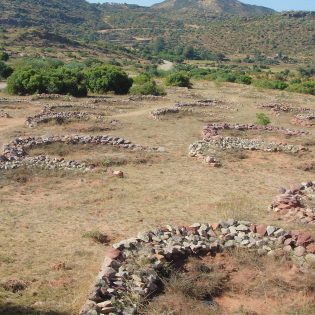|
Agroforestry is a land-use system in which woody perennials (trees, shrubs, palms, bamboos, etc.) are combined with agricultural crops and/or animals in the same land management units, in some form of spatial arrangement of temporal sequence. Agroforestry systems, if well managed, produce food, feed and fibre in proper balance. In agroforestry, trees are included in the cropping system or combined with livestock production in agro-silvo-pastoral systems. Benefits include biodiversity conservation, water and soil quality enhancement and carbon storage. By supporting a variety of complementary products (i.e., food, feed, fuel wood, timber and energy), agroforestry is an important means to increase smallholder incomes. Most importantly, agroforestry systems are modelled to maximize eco-efficiency – reducing the need for external inputs while enhancing nutrient cycling. The observed competition effect between trees and crops for radiation, topsoil water and nutrients, which might translate into lower crop yields, is outpaced by positive effects on soil moisture and nutrient improvement and the reduction of pest pressures. Recent studies on the productivity of temperate silvo-arable agroforestry systems show 20-60% higher productivity relative to the respective monocultures (van der Werf et al., 2007; Smith, 2010; Dupraz and Talbot, 2012). In Pakistan’s spate irrigated areas the use of multipurpose trees and shrubs is the backbone of farming systems and are used for as windbreak, erosion protection, shading, timber, fodder, fencing, firewood, edible fruits, sand dune stabilization, honey, medicinal, charcoal, handicrafts (like from the Mazri plant), spate diversion, bird nesting and root use. In Pakistan, the most common multipurpose trees are Selam, Sedr, Ber, Arack, Jaal, Haleg, Date Palm, Dome, Athel, Daber, Jand, Karita, Kikar and Mesquite. The products (wood, fodder, fruit, etc.) of these trees provide income on top of the income of farming and can serve as a reserve fund. In case of drought and other harsh climate conditions, farmers’ crops might die but the trees will survive. Shelter belts: Together with temperature and humidity, wind speed is one of the strongest drivers of evaporative losses from soil, plants, and surface water/moisture. As the air passes over surface, leaves, and water bodies or morning dew, it draws water along with it. Wind speed can however be drastically reduced by placing barriers in the way of oncoming air currents to serve as windbreaks, some of the most effective windbreaks are trees. Trees planted as windbreaks disrupt and lift incoming air currents, significantly reducing the wind force for a distance up to 10 times the height of the trees. This an important consideration for long-term planning, as the sheltered area of the field will expand horizontally as the windbreak trees grow vertically over the years. The effective height of young trees can be boosted by planting them on earth banks or bunds to add some height in the initial growth stages. The reduced wind speed, in turn, reduces evaporation but many other benefits are gained such as microclimate amelioration, timber and non-timber products (forage, fruit, etc.), ecological corridors and habitat, crop protection (reduced damage and blossom loss), reduced soil erosion, and of course carbon sequestration and cycling. Considerations for shelter beds: Gaps, both horizontal and vertical, in wind-break lines should be avoided as they will serve to funnel wind directly onto the field. Therefore, parallel rows of tree planting are recommended, with the tallest-growing species in the middle, and shorter-growing trees or shrubs on either side to close the gap between the trunks of the central trees, creating a homogenous barrier against the wind. Selection of tree species also warrants careful consideration, to be an effective and long-lasting wind breaker, trees should be deep rooting to offer stability against the force of oncoming winds. They should also have narrow canopies with small crowns to avoid being damaged by the wind themselves. When possible, trees should also be selected for their multifunctionality, such as the ability to produce fruit, fodder, of fix nitrogen in the soil. To avoid competition with crops for water, a shallow trench, or impermeable barrier can be placed between the windbreak and cropping areas, keeping root systems separated.
|
Additional information
| Agriculture | Flood/spate irrigated, Irrigated, Rainfed (Crop) |
|---|
